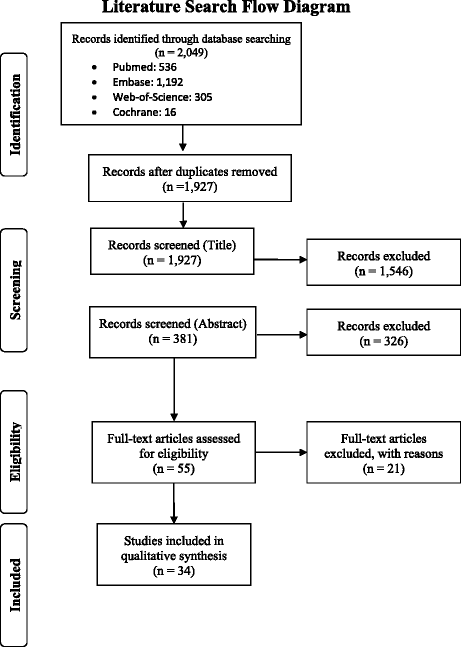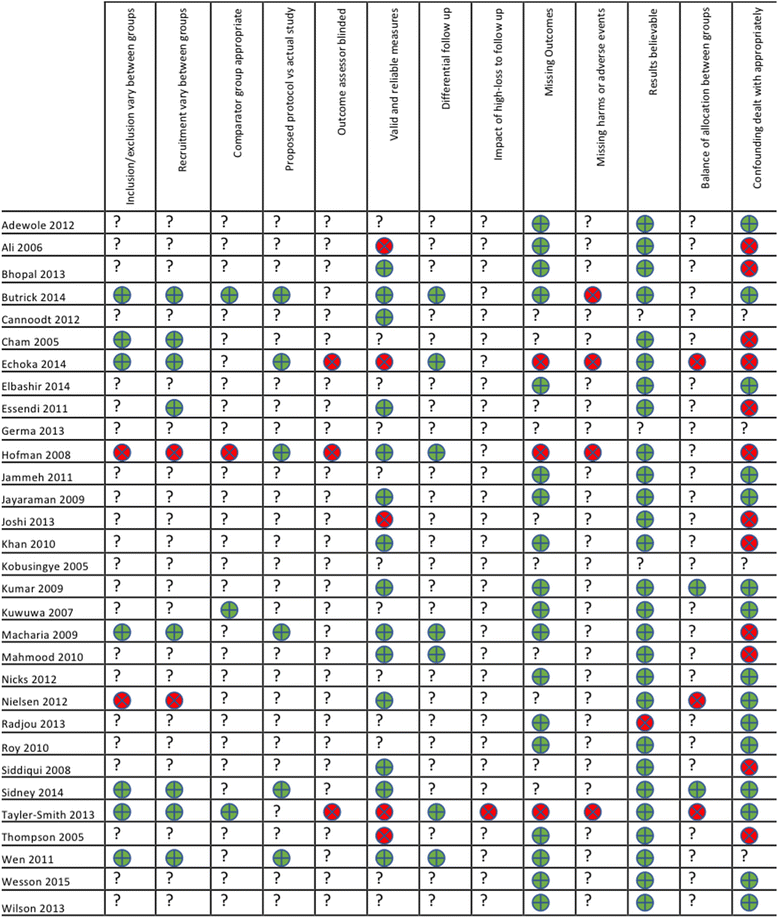Identifying barriers for out of hospital emergency care in low and low-middle income countries: a systematic review
- PMID: 29673360
- PMCID: PMC5907770
- DOI: 10.1186/s12913-018-3091-0
Identifying barriers for out of hospital emergency care in low and low-middle income countries: a systematic review
Abstract
Background: Out-of-hospital emergency care (OHEC), also known as prehospital care, has been shown to reduce morbidity and mortality from serious illness. We sought to summarize literature for low and low-middle income countries to identify barriers to and key interventions for OHEC delivery.
Methods: We performed a systematic review of the peer reviewed literature from January 2005 to March 2015 in PubMed, Embase, Cochrane, and Web of Science. All articles referencing research from low and low-middle income countries addressing OHEC, emergency medical services, or transport/transfer of patients were included. We identified themes in the literature to form six categories of OHEC barriers. Data were collected using an electronic form and results were aggregated to produce a descriptive summary.
Results: A total 1927 titles were identified, 31 of which met inclusion criteria. Barriers to OHEC were divided into six categories that included: culture/community, infrastructure, communication/coordination, transport, equipment and personnel. Lack of transportation was a common problem, with 55% (17/31) of articles reporting this as a hindrance to OHEC. Ambulances were the most commonly mentioned (71%, 22/31) mode of transporting patients. However, many patients still relied on alternative means of transportation such as hired cars, and animal drawn carts. Sixty-one percent (19/31) of articles identified a lack of skilled personnel as a key barrier, with 32% (10/31) of OHEC being delivered by laypersons without formal training. Forty percent (12/31) of the systems identified in the review described a uniform access phone number for emergency medical service activation.
Conclusions: Policy makers and researchers seeking to improve OHEC in low and low-middle income countries should focus on increasing the availability of transport and trained providers while improving patient access to the OHEC system. The review yielded articles with a primary focus in Africa, highlighting a need for future research in diverse geographic areas.
Keywords: Barriers to prehospital care; Emergency medicine; Low income countries (LIC); Low-middle income countries (LMIC); Out of hospital emergency care; Prehospital care.
Conflict of interest statement
Ethics approval and consent to participate
Not applicable.
Competing interests
The authors declare that they have no competing interests.
Publisher’s Note
Springer Nature remains neutral with regard to jurisdictional claims in published maps and institutional affiliations.
Figures
References
-
- Kobusingye OC, Hyder AA, Bishai D, Joshipura M, Hicks ER, Mock C: Disease control priorities in developing countries. In Medical services. In: Jamison DT, Breman JG, Measham AR, et al, editors. 2nd edition. Edited by Anonymous Washington (DC): World Bank; 2006:Chapter 68.
-
- Tayler-Smith K, Zachariah R, Manzi M, Van den Boogard W, Nyandwi G, Reid T, De Plecker E, Lambert V, Nicolai M, Goetghebuer S, Christiaens B, Ndelema B, Kabangu A, Manirampa J, Harries AD. An ambulance referral network improves access to emergency obstetric and neonatal care in a district of rural Burundi with high maternal mortality. Tropical Med Int Health. 2013;18:993–1001. doi: 10.1111/tmi.12121. - DOI - PubMed
-
- Calvello E, Reynolds T, Hirshon JM, Buckle C, Moresky R, O’Neill J, Wallis LA. Emergency care in sub-Saharan Africa: results of a consensus conference. Afr J Emerg Med. 2013;3(1):42–48. doi: 10.1016/j.afjem.2013.01.001. - DOI
Publication types
MeSH terms
LinkOut - more resources
Full Text Sources
Other Literature Sources
Medical
Miscellaneous




 …
…  Study didn’t meet criteria. ? …
Study didn’t meet criteria. ? … 